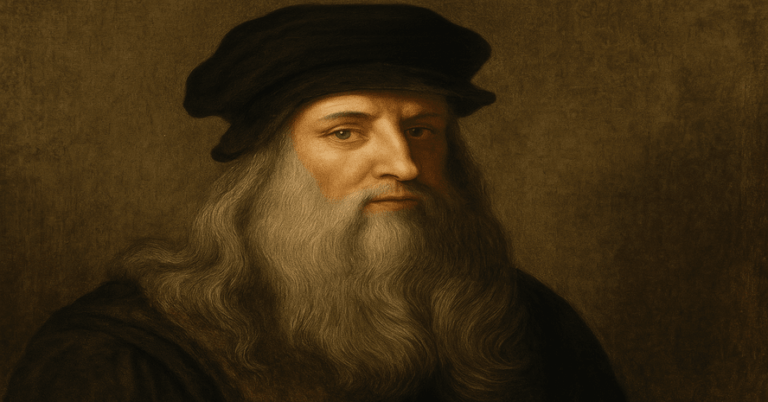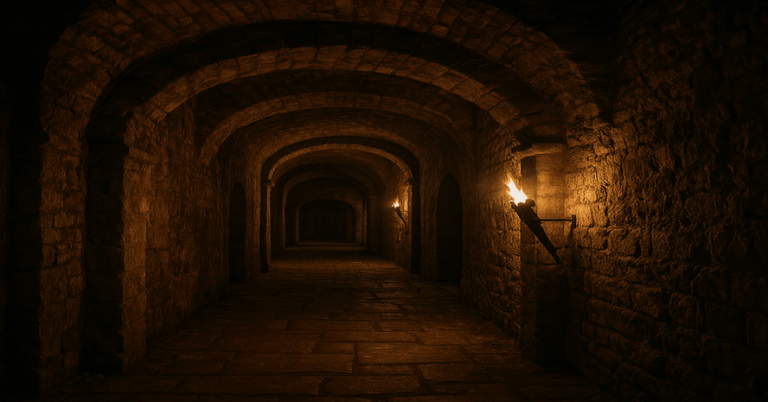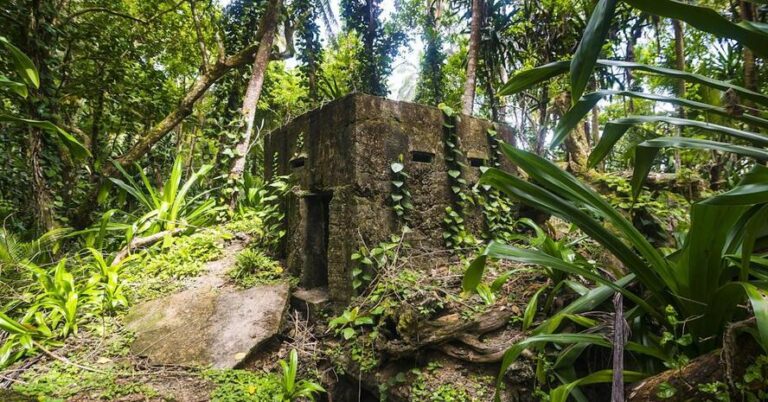You know those moments when history suddenly feels alive? That’s what’s happening right now in Milan, where researchers have stumbled upon something straight out of a thriller novel: a network of hidden passageways beneath the famous Sforza Castle. And get this – they match sketches drawn by Leonardo da Vinci himself. It’s like finding buried treasure, except the treasure is a 500-year-old mystery.
The Castle’s Story: Power, Art, and Secrets
Sforza Castle wasn’t always called that. It started as a fortress for the Visconti family, but in 1450, Francesco Sforza (a mercenary leader – yeah, that was a legit career back then) took over Milan and made the place his own. Under the Sforzas, this wasn’t just some military building – it became a symbol of their power and a hub for Renaissance art and innovation.
The Sforzas brought in the biggest talents of the day, including Leonardo da Vinci. They hired him primarily for military projects, but Leonardo being Leonardo, his genius couldn’t be contained to just one field. The castle stood proud for decades, but nothing lasts forever. By the late 1500s, the Sforza family lost their grip on power, and the castle began a long decline through various wars and changes in ownership. It wasn’t until the 19th century that people started to restore it to its former glory.

What’s Under There?
So what exactly did they find? A team from Milan’s Polytechnic University used some seriously high-tech equipment – ground-penetrating radar and laser scanning – to look beneath the castle. What they discovered blew their minds: an intricate web of tunnels and hidden doors running under the entire fortress.
The crazy part? These passages look eerily similar to sketches in Leonardo da Vinci’s notebooks. He worked for Duke Ludovico Sforza in the late 1400s as a military engineer, artist, and architect. His notebooks are filled with designs for all sorts of defensive structures, including underground fortifications.
The big question now: Did Leonardo not only design these secret corridors but actually help build them? And why were they constructed so cleverly that they remained hidden for five centuries?

Leonardo’s Underground Vision
Leonardo’s notebooks are famous for their wild inventions and precise engineering. They contain detailed plans for underground fortifications and escape routes that most scholars thought were just theoretical – until now.
These tunnels aren’t your typical medieval passages. They follow Milan’s natural underground rock formations and use engineering principles that Leonardo had studied deeply. Instead of rough stone walls like most medieval tunnels, these show signs of sophisticated design meant to prevent collapse and maximize secrecy.
Some passages are super narrow – just wide enough for one person – while others open into chambers that might have stored supplies or served as meeting rooms. Even more fascinating is what looks like an early attempt at a water-powered escape route. Did Leonardo design an underground canal system to smuggle people out of the castle unseen? It wouldn’t be the craziest thing he ever dreamed up.
Why Build These Tunnels?
We still don’t know exactly what these passageways were for. Were they escape routes for the Sforza family during sieges? Secret paths for moving troops? Or did Leonardo see a need for discretion that history never recorded?
Some researchers think the tunnels might have connected the castle to other important spots in Milan, possibly even tapping into the city’s underground waterways. While they’ve mapped some sections, many tunnels remain blocked or too dangerous to explore.
Perhaps the most intriguing clue: certain symbols carved into the stone match those in Leonardo’s personal notebooks. These mysterious markings, some resembling his famous Vitruvian Man proportions or geometric studies, only deepen the mystery. Was there something more to these tunnels than just military function?

Imagining Leonardo’s Secret Milan
Picture Milan in the late 1400s: torch-lit stone corridors, political scheming in every corner, and beneath it all, shadowy figures moving through hidden passages. Did Leonardo himself ever walk through these tunnels? Did he test them out, moving silently under the streets of Renaissance Milan?
This discovery adds yet another layer to Leonardo’s already mind-blowing legacy. It reminds us that history isn’t a closed book – secrets remain buried beneath our feet, waiting to be found. If these passageways are only coming to light now, what else might still be hidden from Leonardo’s ingenious mind?
For now, the tunnels beneath Sforza Castle only tell us part of their story. But one thing’s clear: Leonardo wasn’t just a painter and inventor. He was a master of secrets, creating mysteries that have survived for half a millennium.




